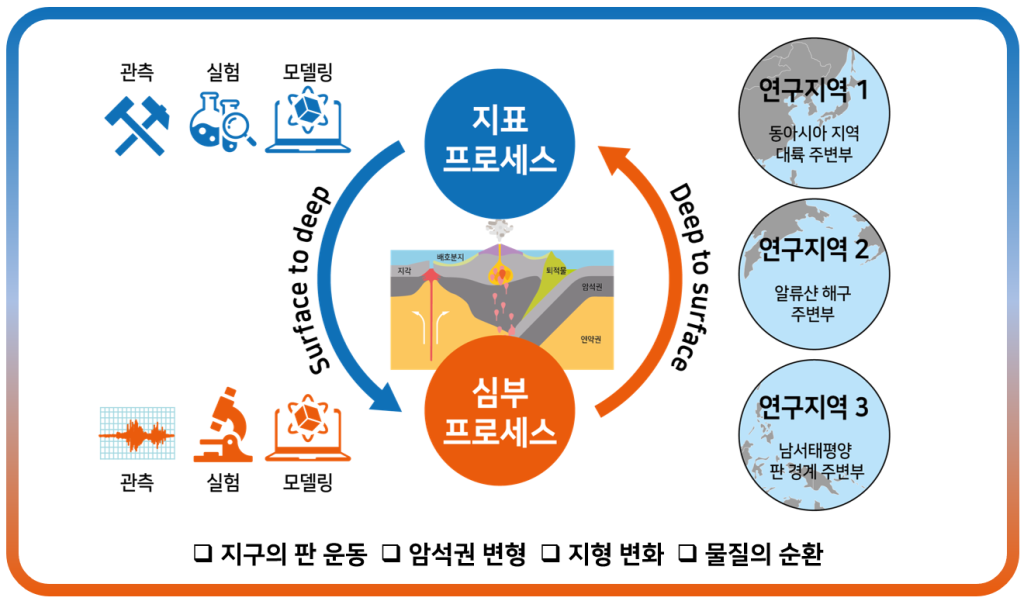About Us
The Center for Deep-Surface Coupling of Earth, housed in the School of Earth and Environmental Sciences, is a leading research center at Seoul National University, focusing on understanding coupling of deep Earth and surface processes.

Scientific Motivation

Feedbacks between surface and deep Earth processes play a key role in the plate tectonics—modulating mountain building, rifting, magmatism, intraplate deformation and the interactions between landscapes and climate. These feedbacks occur over both geologic and human time-scales. They have direct societal relevance through their influence on geohazards—for example in the triggering of landslides by large earthquakes—and on Earth’s habitability, through the role of erosion and basin evolution on the global carbon cycle.
Further, understanding these feedbacks is important in evaluating surface responses to changing sea level. While many of the basic feedbacks between deep Earth and surface processes are well established, the details of these interactions remain poorly constrained—which in turn hinders our ability to predict the evolution and future state of these systems. To do so, we must investigate the linkages between deformation and rheology in the Earth’s lithosphere with erosion and erodibility in the near surface across a range of spatio-temporal scales. Study regions are east Asia, western Pacific Ocean basin, and western Aleutian margin.
Intellectual Merit
The overarching aim of our research is to explain how the interaction between the deep mantle and lithosphere affects lithospheric deformation and topography. The tool to achieve this goal is numerical geodynamic modeling in addition to extensive data and model collections.

Implications of Geodynamic Modeling
One approach to study the interactions is through numerical models that couple surface and tectonic processes in order to quantify the effects of a range of geologic and geomorphic parameters. This approach allows for hypotheses derived from field observations to be quantitatively tested, and for new hypotheses to be developed, which can later be validated through field and laboratory experiments.
New observations as well as reexamination of old data define the scope of modeling. In all cases, in order for the data to be useful, they will be accessible (open data access via in-house server) and re-formatted by following international data standards. We also integrate model results with geologic and geophysical datasets.

